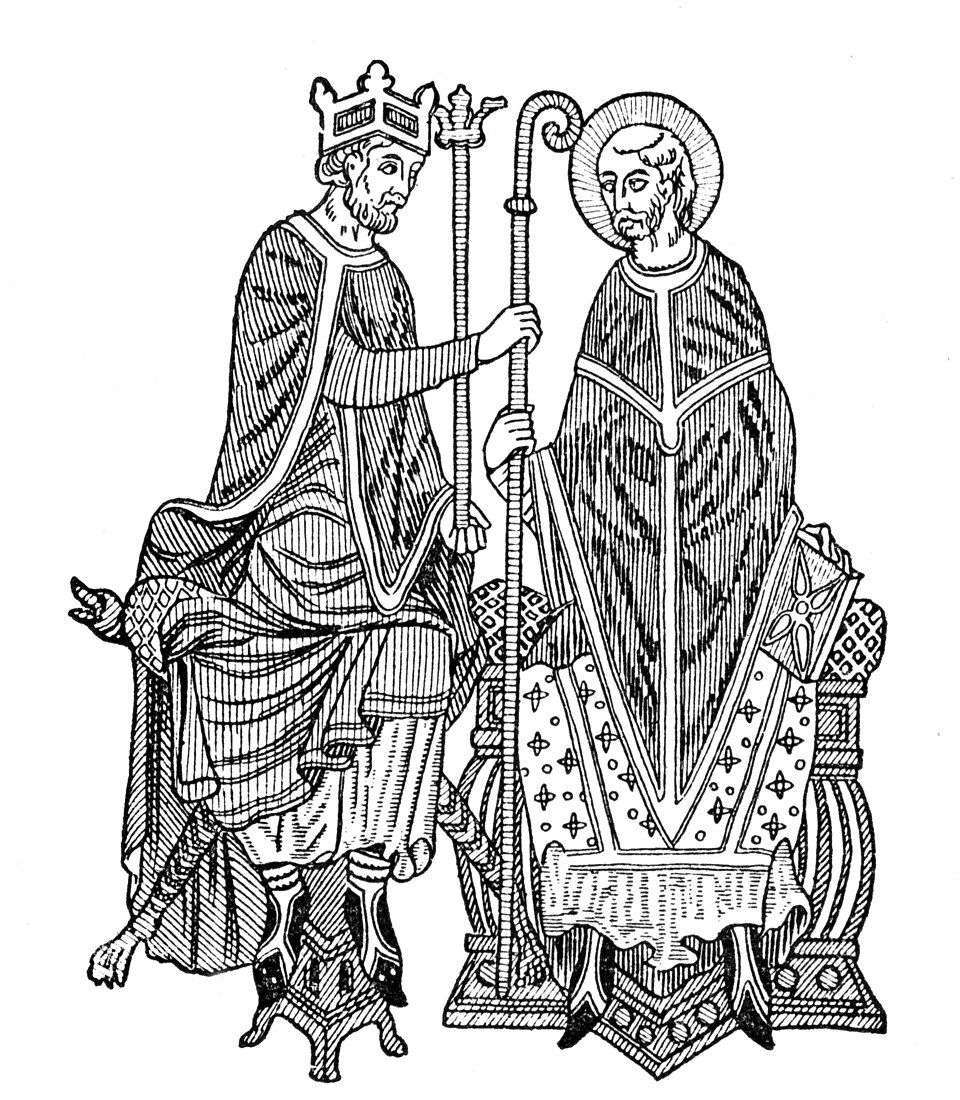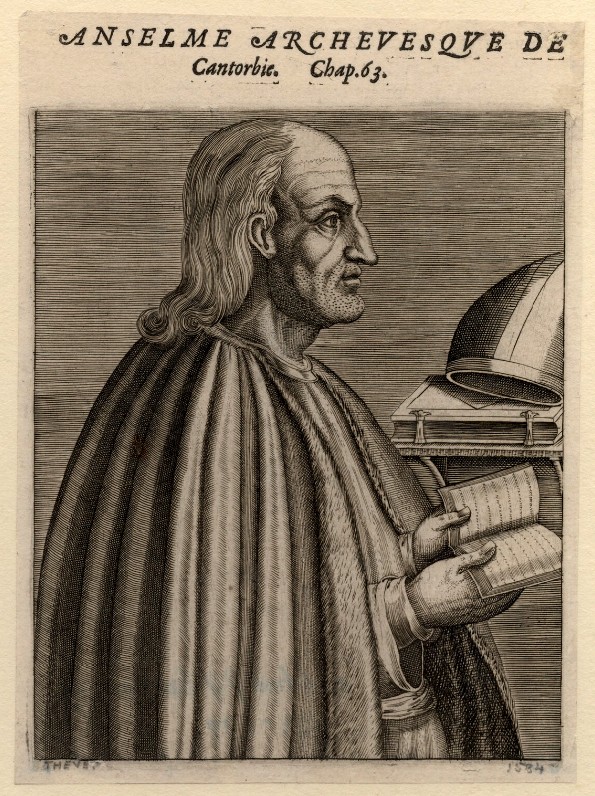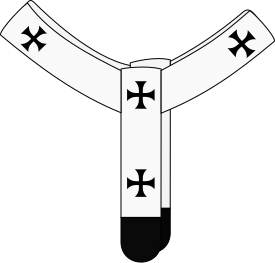OCR Specification focus:
‘William’s relationship with the papacy, including Urban II; the appointment of and relationship with Anselm as Archbishop of Canterbury (1093)’
William II’s reign was marked by a tense relationship with the papacy, complicated by disputes over authority, ecclesiastical appointments, and personal antagonisms with leading churchmen.
Background to William II’s Relationship with the Papacy
William II ‘Rufus’ inherited from William the Conqueror a firm belief in royal supremacy over the English Church. Like his father, he maintained that the king, not the pope, should control the appointment of bishops and abbots. The papacy at the time, under Pope Urban II, was engaged in the broader Investiture Controversy—a conflict between secular and papal authority over who could appoint high-ranking church officials.
Investiture Controversy: A major 11th- and 12th-century dispute between the papacy and secular rulers over the right to invest bishops and abbots with their spiritual and temporal authority.
At issue was lay investiture, the conferral of the ring and staff by a secular ruler to install a bishop.

A medieval king invests a bishop with crozier and ring—the symbolic act contested across Europe in the 11th–12th centuries. The scene clarifies why papal reformers opposed secular control of episcopal appointments. Although generic, it illustrates exactly the practice debated in England under William II. Source
Although the papacy under Urban II sought greater influence in England, William resisted any erosion of royal control. This made his reign a flashpoint in the Anglo-papal relationship.
The Papacy and Political Context
Urban II’s papacy (1088–1099) coincided with a period of ecclesiastical reform aimed at centralising authority in Rome, enforcing clerical celibacy, and eliminating simony (the selling of church offices). These reforms challenged the traditional Anglo-Norman royal prerogatives. William’s political stance was pragmatic:
He recognised Urban II as pope only when it suited his political needs.
He avoided allowing papal legates to operate freely in England without his approval.
He treated the Church as a revenue source, keeping sees and abbeys vacant to collect their income.
Appointment of Anselm as Archbishop of Canterbury (1093)
Circumstances of Appointment
By 1093, the Archbishopric of Canterbury had been vacant for nearly four years after the death of Lanfranc in 1089. William deliberately delayed appointing a successor to exploit the revenues of the see. However, in late 1093, after a severe illness, William feared death and agreed to appoint Anselm, Abbot of Bec, a renowned theologian and reformer with strong papal ties.
In 1093 Anselm of Canterbury was appointed archbishop, becoming the focal point of disputes over homage to the king and obedience to Rome.
#######################################

Line-engraved portrait of St Anselm, Archbishop of Canterbury (r. 1093–1109). His appointment under William II and subsequent clashes over investiture and papal obedience illustrate how European reform pressures played out in England. Source
The appointment took place in a dramatic scene at Gloucester, with William personally forcing the pastoral staff into Anselm’s hand.
Anselm was reluctant, aware that his reformist ideals would clash with William’s policies.
Early Tensions
Anselm insisted on receiving the pallium (a symbol of archiepiscopal authority) directly from Pope Urban II, which required William’s recognition of Urban as pope. This was politically sensitive, as William had not yet officially declared allegiance in the papal schism between Urban II and Clement III.
Pallium: A woollen vestment given by the pope to archbishops as a symbol of their authority and connection to Rome.
The pallium—a woollen band marked with crosses—signified metropolitan authority and was conferred by the pope.
#######################################

Simplified diagram of the pallium, the woollen band worn by the pope and metropolitan archbishops. Its bestowal by the papacy symbolised jurisdiction and papal recognition. The diagram shows the loop with pendilia and crosses; no extra content beyond what the syllabus requires. Source
Ultimately, William allowed Urban II’s pallium to be brought to England by a papal legate, thereby recognising Urban—though carefully maintaining control over the process.
Key Disputes between William II and Anselm
1. Royal Control over Church Affairs
William asserted that no bishop or churchman could leave England or correspond with the pope without his permission. Anselm saw this as a violation of canonical independence and resisted the king’s interference.
2. Investiture and Papal Allegiance
Anselm’s loyalty to the reformist papacy conflicted with William’s demands for royal supremacy. The Investiture Controversy meant that William was determined to keep control over appointments, while Anselm refused to accept royal investiture without papal approval.
3. Financial Exploitation of the Church
William frequently kept ecclesiastical positions vacant to seize their revenues. Anselm denounced this as simony, directly opposing one of the core aims of the Gregorian reform movement.
Escalation and the Investiture Controversy in England
By 1095, disputes came to a head at the Council of Rockingham, where William and Anselm clashed over papal recognition and church autonomy. Although a temporary compromise was reached, tensions persisted.
William’s position: The king held ultimate authority over the Church in England.
Anselm’s position: The Church owed obedience to the pope in spiritual matters, even if this conflicted with the king’s commands.
The broader European Investiture Controversy influenced this conflict, with reformist popes insisting on the independence of the Church from secular rulers.
Exile of Anselm
In 1097, the disagreements proved irreconcilable. Anselm requested leave to travel to Rome to consult with Urban II. William refused, interpreting this as a challenge to his authority. Eventually, William allowed Anselm to depart, but seized the revenues of Canterbury during his absence.
Anselm spent the remainder of William’s reign in exile, advising Urban II and supporting papal reform.
The dispute remained unresolved at William’s death in 1100.
Significance for Anglo-Papal Relations
The conflict between William II and the papacy, epitomised in his relationship with Anselm, was significant for several reasons:
It demonstrated the limits of papal influence in England during the reign of a strong-willed monarch.
It highlighted the ongoing tension between royal prerogative and ecclesiastical reform.
It embedded the English Church within the wider European Investiture Controversy.
It set a precedent for future monarch-archbishop conflicts, particularly under Henry I and later kings.
William’s reign thus stands as an important episode in the medieval struggle over church-state relations, revealing the delicate balance between political expediency and religious authority.
FAQ
William II delayed formally recognising either claimant to the papacy, using the schism to maintain his own leverage over the English Church.
By withholding recognition, he could control whether papal legates entered England and extract concessions before granting allegiance.
His eventual recognition of Urban II in 1095 was driven more by political necessity than doctrinal loyalty.
William II deliberately left the see vacant for almost four years after Lanfranc’s death in 1089.
This allowed him to:
Collect the revenues of the archbishopric directly for the royal treasury.
Avoid installing a reform-minded figure who might challenge his control.
The vacancy was a calculated part of his wider approach to managing Church resources.
The Council of Rockingham was essentially an English microcosm of the continental Investiture Controversy.
William II convened it to resolve disputes with Anselm over papal recognition and Church autonomy.
While it ended without a decisive settlement, it mirrored the broader struggle between reformist papal policy and entrenched royal authority found across Europe.
Papal legates acted as official representatives of the pope in foreign territories, including England.
William II strictly controlled their access, often refusing entry unless it served his political aims.
When Urban II’s legate brought Anselm’s pallium in 1095, William staged the ceremony to emphasise royal control over the process, despite acknowledging papal authority.
Anselm’s departure in 1097 removed an outspoken papal ally from William’s immediate sphere, easing day-to-day tensions but deepening the rift.
While in exile, Anselm:
Advised Urban II on English Church matters.
Supported broader papal reform efforts.
This sustained the papacy’s interest in English affairs and ensured the investiture dispute would outlive William’s reign.
Practice Questions
Question 1 (2 marks)
Name the pope with whom William II and Archbishop Anselm were primarily concerned during the Investiture Controversy in England.
Mark scheme:
Pope Urban II (1 mark)
Award 1 additional mark if the answer also specifies the years of his papacy (1088–1099).
Question 2 (5 marks)
Explain two reasons why William II’s relationship with Archbishop Anselm became strained after 1093.
Mark scheme:
Up to 3 marks for each well-explained reason. Award 1 mark for identifying a relevant reason, plus up to 2 marks for accurate and developed explanation.
Possible points:
Disputes over papal allegiance: Anselm insisted on recognising Pope Urban II and receiving the pallium from him, challenging William’s control over papal relations (1 mark identification + up to 2 marks explanation).
Royal control over Church affairs: William maintained that no churchman could contact Rome without his permission, which Anselm opposed as contrary to canonical independence (1 mark identification + up to 2 marks explanation).
Financial exploitation of the Church: William kept sees vacant to collect their revenues, a practice condemned by Anselm as simony (1 mark identification + up to 2 marks explanation).
Maximum 5 marks.
Only the first two developed reasons credited; additional valid points may be used to strengthen explanations.

